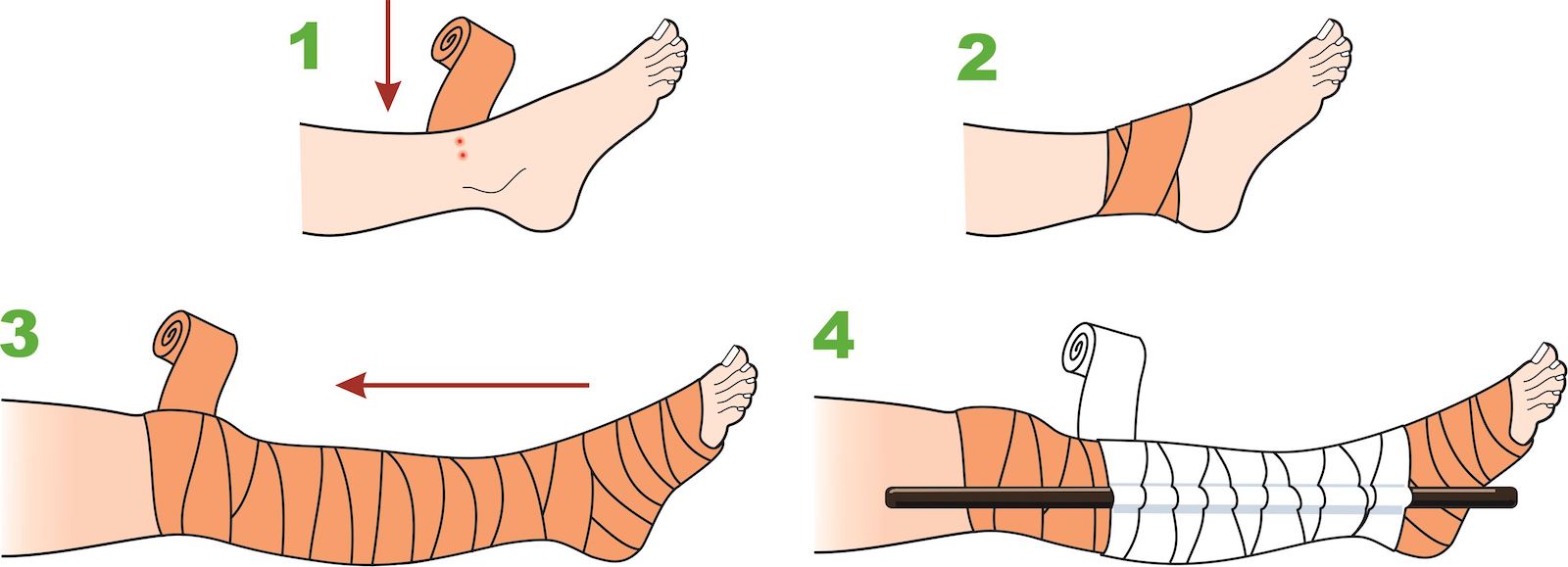Forget sucking out snake venom as you see in the old movies. Snake bites should be treated in a very specific way, otherwise, they can be fatal.
It is estimated that between 30 and 80 out of every 100 000 people who are annually hospitalized, are due to a snake bite. And if your love is for the outdoors, chances are greater that you will be bitten.
Prevention is the best treatment for snake bites
The best way to treat a snake bite is to avoid it in the first place. Use these guidelines:
Keep your eyes open
Watch out for snakes in the wild and stay as far away as possible. Be especially careful when breaking up your camp - snakes can curl up very small and love warm, dark places.
Stay calm and watch
If you do get closer than two steps from a snake, stand still and watch how the snake reacts. The snake will more likely look to escape rather than attack.
If the snake is flat on the ground, it probably will flee and not attack. But if it raises its head, it probably wants to attack.
Slowly
If you find yourself closer than two steps from a snake and you’ve accidentally cornered it, step away slowly. This way the snake won’t see you as a threat.
Stand aside
If you accidentally stand on a snake, stepping aside quickly is your best course of action.
What if someone does get bitten by a snake
Some types of snake venom have both cytotoxic and neurotoxic properties (see sidebar). However, think very carefully before trying to diagnose a snake bite yourself. An incorrect diagnosis can mean incorrect treatment
In the case of a Cobra or Mamba (neurotoxic), apply a compression bandage over and above the bite site (read how below). This will slow down the spread of the venom. This is especially important if the victim is far from medical help.
Avoid any bandages on a cytotoxic bite. Because a cytotoxic bite site will swell up, this could really hurt the victim. Never use a tourniquet! It can cause ischemia (weakened blood flow due to the swelling) and even gangrene if applied for more than 1 hour.

The pressure immobilization technique
When the victim suffers a neurotoxic bite on a limb, use the pressure immobilization technique:
- Apply pressure, preferably with a stretch compression bandage. Alternatively, wrap the whole limb in a long sleeve shirt. It is however a last resort as it is difficult to apply pressure with a non-stretchable material, and one shirt may not be long enough.
- Start putting the bandage between 5 and 10 cm above the bite site (ie between the wound and the heart), and wrap the bandage so the pieces overlap. Move towards the heart, and then down again and over the wound (in the direction of the hand or the foot).
- Immobilize the limb and, if possible, support it with a sling or a splint.
- See to it that the bandage is tight, but so thigh as to cut off blood flow or cause further discomfort. If the dressing is uncomfortable, the person could unconsciously try to move the limb which will undo the immobilisation.
- Mark the location of the bite on the outside of the bandage.
- Don't panic if you notice swelling around the wound. It is a natural consequence of the treatment.